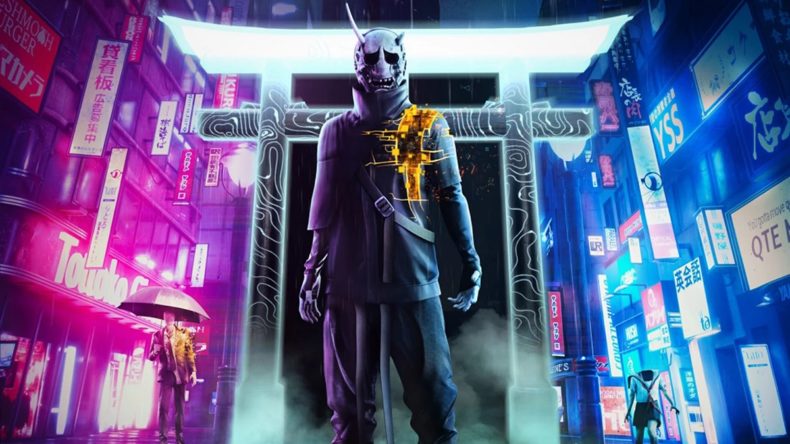March 25, 2022
It took me a while to get used to the gameplay of Ghostwire: Tokyo. Even after finishing the main story, I wasn’t completely sold on it. The aiming is pretty poor, or at least not particularly responsive or tight. Movement is slow unless you adjust the sensitivity, and even then I struggled with getting around effectively, especially in combat. However, despite my issues, I began to enjoy fighting the evil spirits that populated Shibuya, harnessing my range of powers and abilities to rip out their cores and find the evil occultist known as Hannya.
Ghostwire: Tokyo is filled with things to do. It’s a good thing, really, as the main story isn’t that long. Although I’d put in a fair amount of time, I felt there was still much to find out. You play as a guy called Akito. After a purge of the population of Tokyo where people’s spirits have been ripped from their bodies, a mysterious wraith known as former detective KK takes over your body. At first, you don’t get on, and it takes a while for the two of you to work together. Throughout the game, you learn more about each other, including details about your families. That is one of the key themes at the heart of everything. Akito’s sister Mari is lying in a hospital bed when the main antagonist Hannya takes her. It’s unclear why at first, but there’re a couple of big moments that reveal his full intentions.
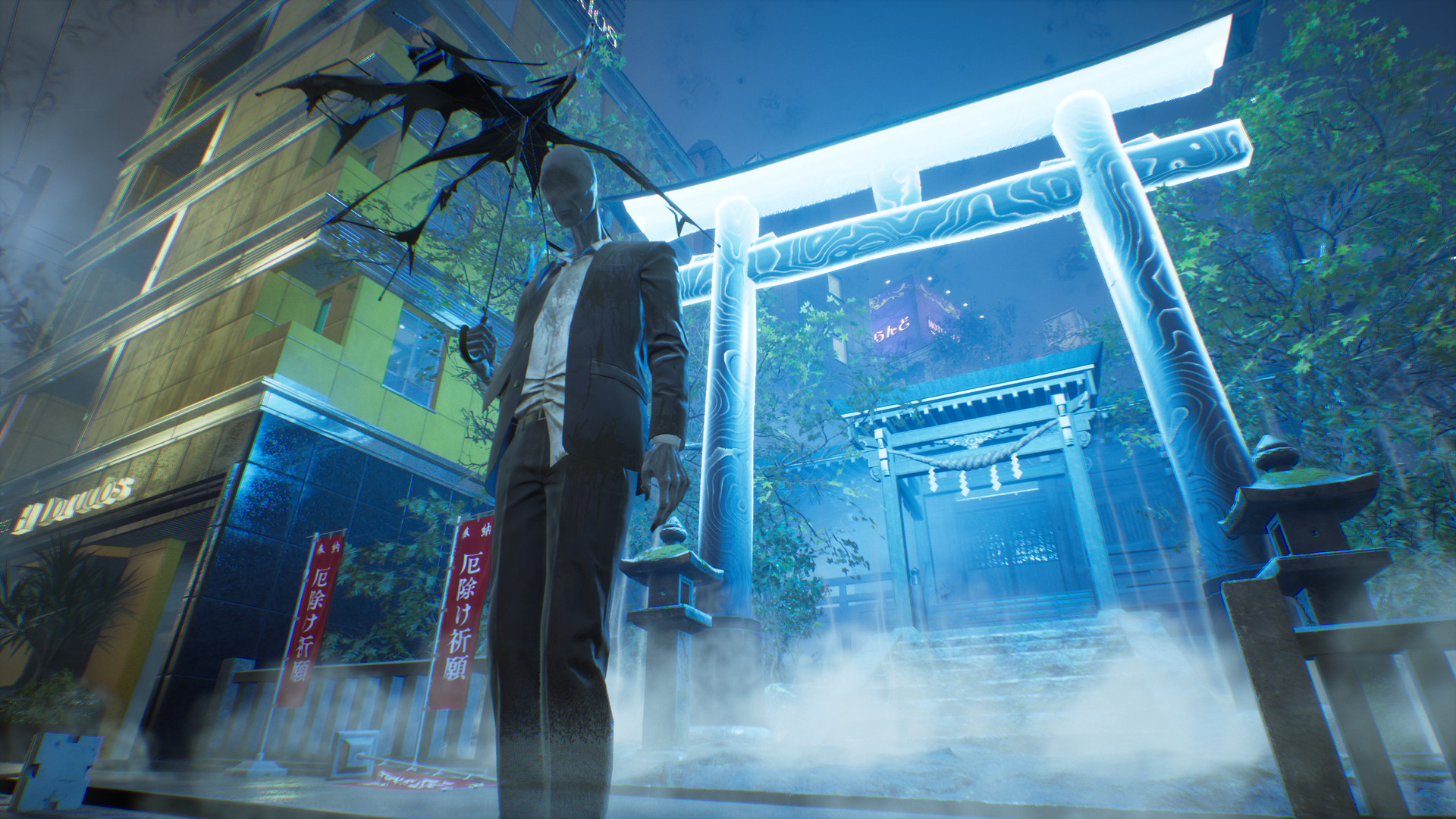
Ghostwire: Tokyo: Gorgeous by design
As it nears its conclusion, the sibling relationship of Akito and Mari has some heart-breaking revelations. There’s a poignant moment where your backstory plays out. It’s done in such a beautiful way, both in its writing and its visuals that you can’t help but be impressed by the entire design of the game. That’s something that never gets old. The visuals are amazing. Not just because it looks wonderful on PS5, either. The ward of Shibuya in Tokyo is filled with different districts, and by cleansing Torri Gates, you’ll be able to clear the fog and see more of it. Shopping arcades and blocks of skyscrapers, adorned in neon and colour. Despite the eerie presence, the attention to detail is staggering. In many of the indoor settings, Tango has gone to town on making some of the dream-like sequences you encounter pretty special.
What I loved most about Ghostwire: Tokyo is the world building. Japanese urban legends are thrown in front of you throughout Tokyo. Some are vile entities that want to kill you. Others are there to aid you. What Tango Gameworks has done well is write a story that makes these paranormal forces play a vital role in everything you do. For starters, the bulk of enemies you fight are Visitors – ghostly apparitions that vary in looks and attacks. Schoolgirls, police officers, businessmen. A quick look at their description and they are all born out of negative emotions and life experiences: a lack of guidance in life, boredom from the mundanity of office jobs; choosing to break instead of uphold the law. They are designed incredibly well.
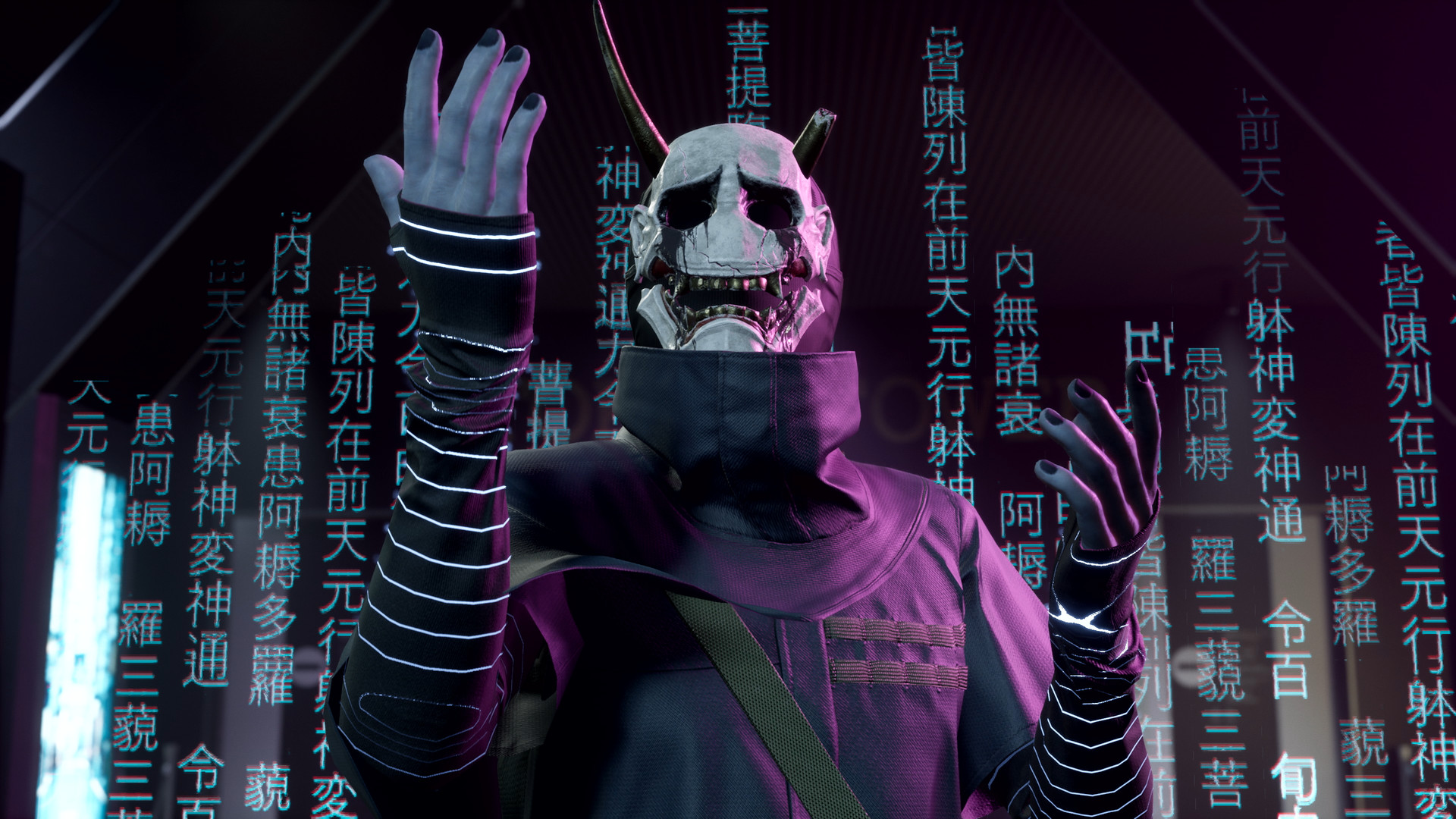
Very nice, very evil
One such being is a woman in a trench coat, wearing a mask and wielding a huge pair of scissors. She utilises her blades to slice at you with ferocity and does serious damage. Other Visitors fire flaming orbs at you, use martial arts, and try to take your soul. They are vicious, yet I couldn’t help but be fascinated by them. Other supernatural creatures that populate the world are Tengus. These flying creatures are there to aid you in your journey. They are always high up in the city’s skyline, and can be ziplined to get you onto rooftops, away from most Visitors. Two-tailed cats known as Nekomata act as convenience store clerks where you can buy various key items in-between ridding the city of evil.
Akito’s powers all revolve around Ethereal Weaving. By harnessing the power of water, wind, and fire, you can vanquish enemies by collecting ether and turning it into powerful projectiles. Each one can be levelled up, becoming more effective every time. Wind can be fired in three strong bolts. Fire can be launched into enemies with a wide range of impact. Water can slice through multiple enemies. The main goal is to uncover each Visitor’s core. Once you can see it, Akito must rip it away from the body to destroy the enemy permanently. Sometimes you can sneak up on a Visitor and do it without provoking a fight. Unfortunately, enemies are either completely oblivious or too aware.
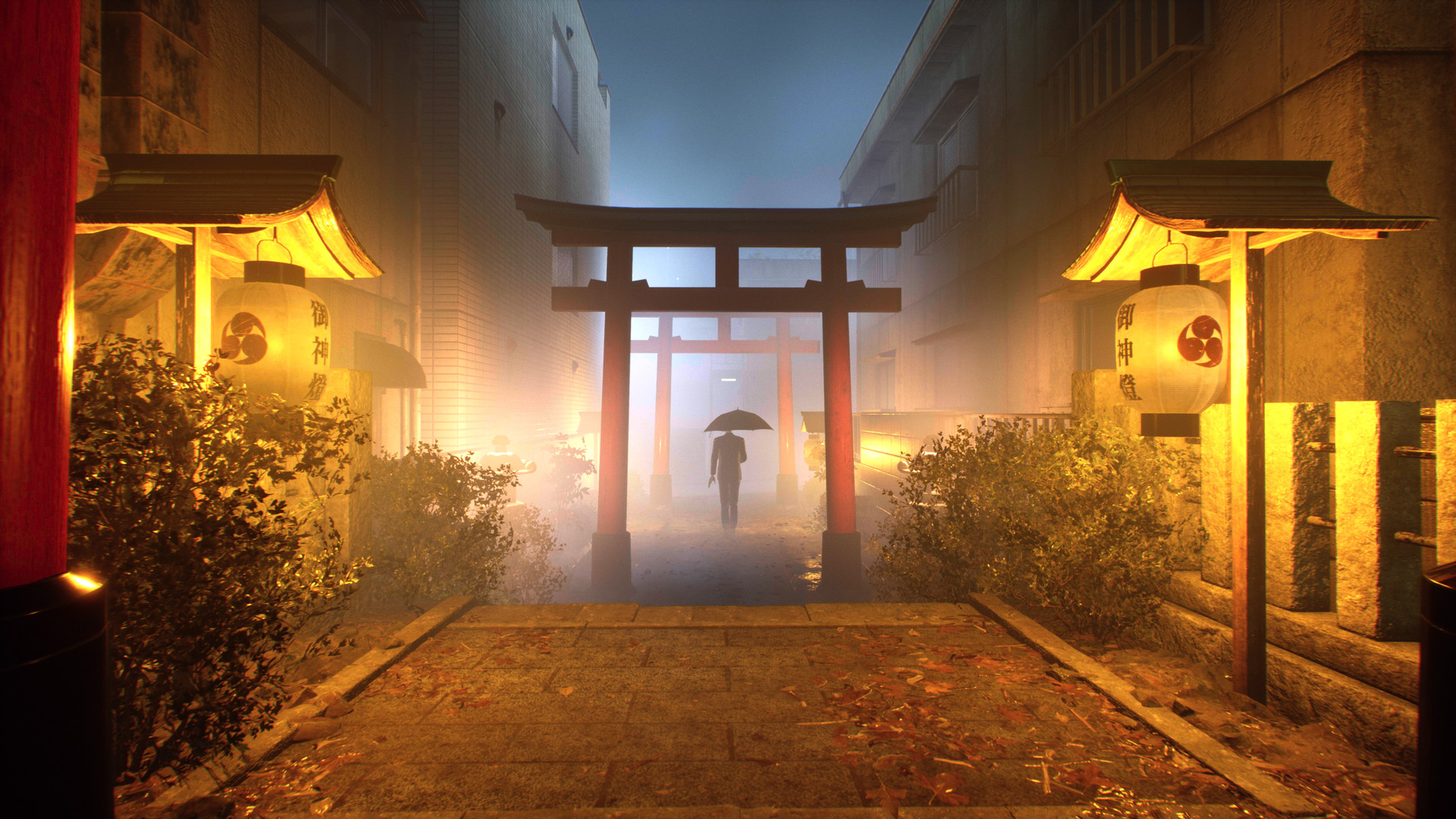
Ghostwire: Tokyo: Fun yet flawed combat
I would sneak up on someone only for them to turn around and notice me. Other times, they don’t even acknowledge my existence as I go from one to the next purging their cores to my heart’s content. When full scale battles occur, it can be tough to succeed. There’s no dodging or strafing, which makes a huge difference. Enemies will move fast, and the auto-aim doesn’t lock on for the entirety of an attack. I didn’t always use it because it tended to fail when I needed it the most. You almost get used to fighting with these issues, but by then you’re in the closing stages of Akito’s story.
Despite these shortcomings, combat can be pretty fun. Sometimes, Akito and KK’s bodies will be separated. This forces you to act smart and pick your battles, as well as making use of the bow and arrow. When you are together and Ethereal Weaving is in full swing, removing cores builds up your ‘Wire In’ meter. Once filled, you unleash a powerful attack that wipes out any Visitors close by, and gives you added power for the duration of its effect. Throughout Ghostwire: Tokyo, you’re given many opportunities to improve your stats. Levelling up improves your skills and abilities. Various prayer beads can be found and equipped which improves your attacks, the effectiveness of consuming food for health, and more. The capacity of your elemental attacks can be permanently improved at Jizo Shrines.
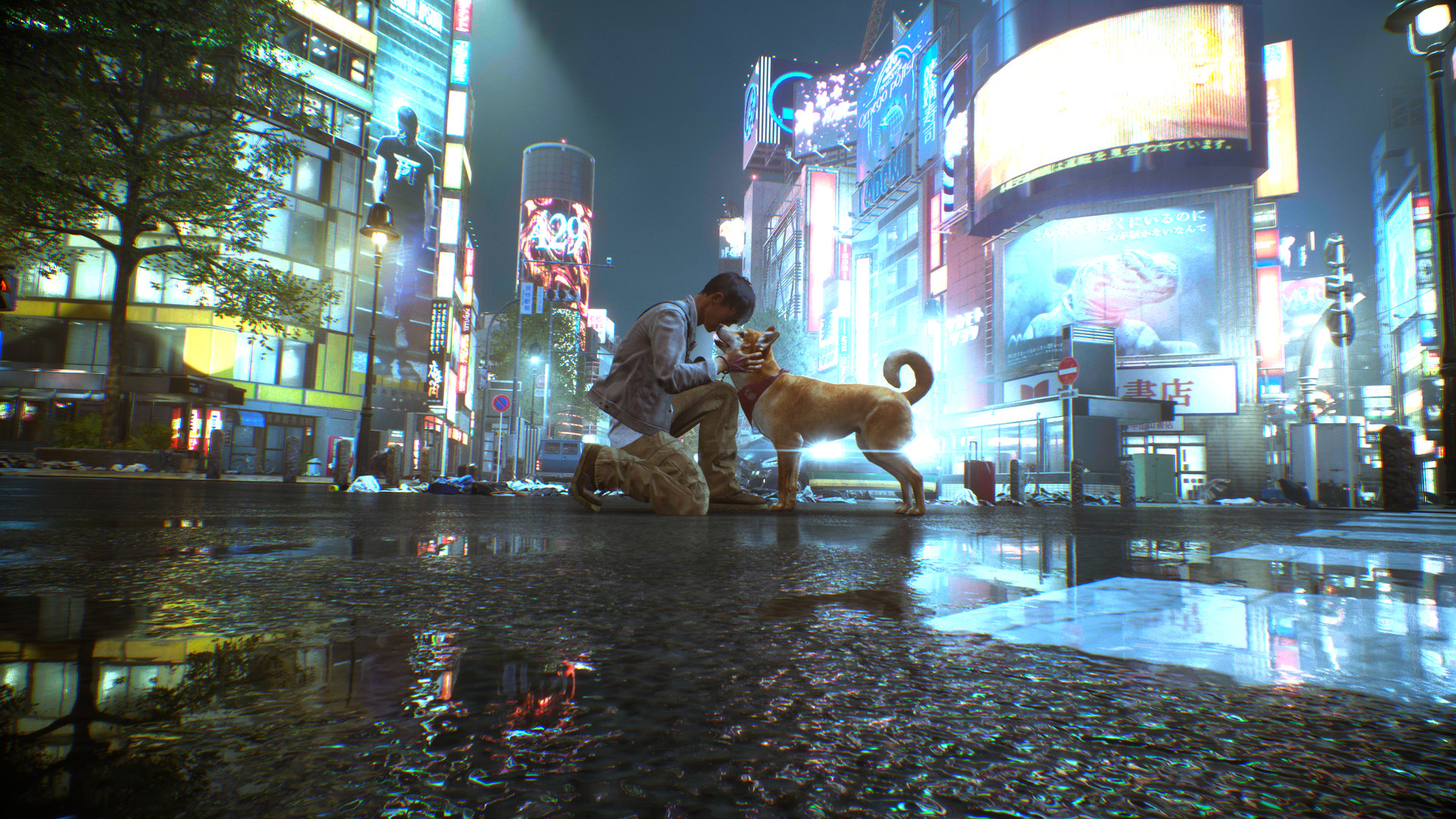
Take a break
There’re even more ways to improve your character, but whether you utilise them or not depends on how much you stray away from the main story and put time into the other activities. As mentioned earlier, there’re plenty of side missions to do, often revolving around helping various spirits scattered across the city. Although there’re no living NPCs, these spirits all have a valid reason for being there. Some of their stories are pretty interesting, too. I never got tired of seeking out optional quests. They reward you with XP, and offer a little respite from the main plot. You can also interact with dogs and cats for additional help or a friendly interaction. By using a paper doll known as a Katashiro, you collect spirits and send them through a phone to one of KK’s friends known as Ed. In return, you’ll get meika (the game’s currency), and XP.
Ghostwire: Tokyo is beautifully designed. The city is gorgeous to look at, and the paranormal beings that populate it are equally fascinating. While the story isn’t particularly long and feels like it could have been fleshed out more, I was still intrigued by it. The gameplay isn’t as solid as I’d hoped, especially as some of the fights are quite challenging. Regardless, I was more than impressed by the style present in every inch of its design, and the way the developers have blended in urban legends with slick visuals is more than enough reason to give this one your attention.
Beautiful environments
Enemy design is fantastic
Interesting story
Varied combat
Side missions are fun
Relatively short campaign
Controlling Akito can be awkward
Aiming is frustrating
AI is unbalanced
Ghostwire: Tokyo looks stunning throughout, with impressive enemy designs and interesting locations, despite a few issues with its gameplay.


